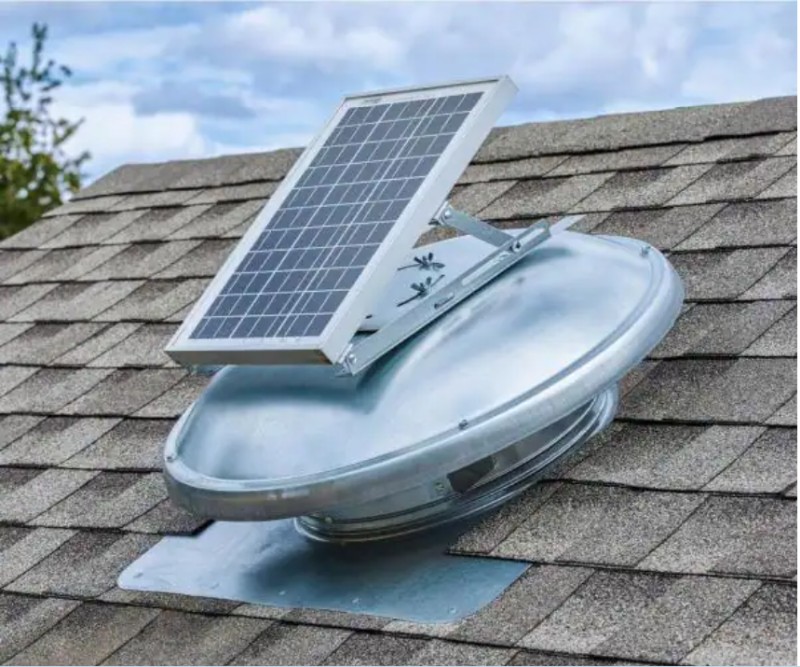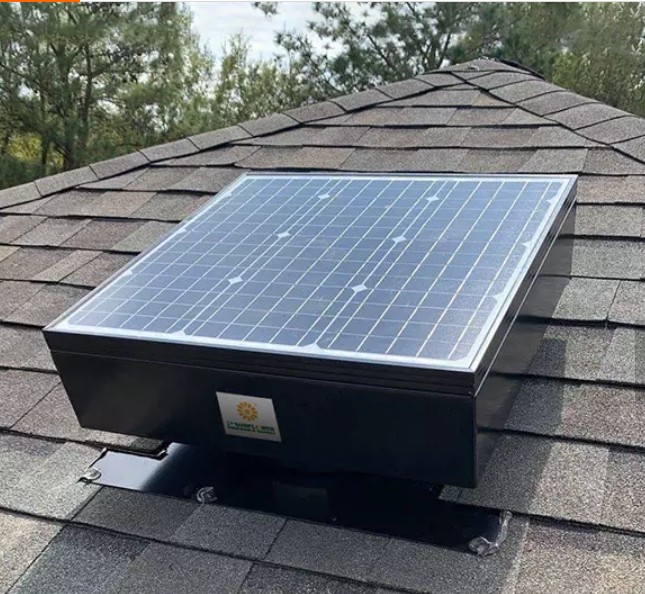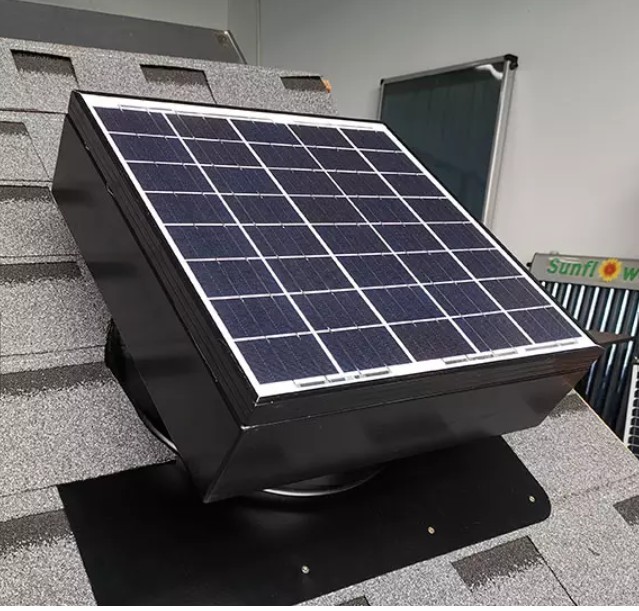Solar roof vents are fast becoming a staple in many homes. You see, it’s no longer enough that you have an HVAC system in place or a passive ventilation system.

Sure, it takes care of keeping you warm in the winter and cool during the summer, but your HVAC can easily rack up your energy bills.
It is not only impacted by the temperature of your room and other key locations in your house but also by areas that are not as visible or frequently accessed, such as your attic.
Usually, homes store large amounts of heat above the first-floor or second-floor ceilings, causing one to feel stuffy in the attic, where heat and humidity are concentrated.
Without proper ventilation and air exchange, such trapped heat ends up warming the entire living space below. Over time, it will affect your home insulation, invite pests, and damage your roof infrastructure.
Furthermore, attic heat causes your HVAC to work doubly hard, sucking out lingering warm air and replacing it with ambient temperature or anything lower to provide comfort to the residents.
Solar roof ventilation is an energy-efficient way that could lower the strain on your HVAC and, more importantly, your pocket since it can reduce your electricity bill by up to 30%.
In this article, we’ll discuss the pros and cons of solar roof vents to help you decide if they are the right solution for your home.
What are solar powered roof vents?
Also called solar attic fans, solar roof vents are devices designed to provide airflow in and out of your roof cavity.

Although they can cover from 800 to 1200 cubic feet per minute, this capacity is comparatively lower than regular electric fans.
At this rate, however, they can eliminate heat and moisture buildup using fan blades that are mechanically operated and powered by harnessing direct sunlight.
Each solar roof vent unit has a solar panel consisting of photovoltaic cells and actively ventilates your attic area.
As such, it makes for an environmentally clean method in preventing heat from seeping into your living space.
While it draws out warmth from the attic, a solar roof vent also allows cooler air from the outside to flow in.
Some solar roof vents have integrated thermostats or humidistats that measure heat and humidity so that it will only power on once it reaches a certain reading.
However, most solar vents will readily operate whenever it catches sunlight.
Let’s now discuss some advantages and disadvantages of Solar Roof Vents.
Pros of Solar Roof Vents
1) No electrical installation needed
Unlike many home appliances, a solar roof vent is a breeze to install – no wires, no cables that electric attic fans require, which quite frankly, makes them a more attractive option.

It is a fully-assembled unit that works automatically as soon as you lift the protective cover from its solar panel.
Since a solar roof vent does not require electrical installation, you don’t have to call for professional help to set it up.
It can be a DIY project, especially for somebody already used to undertaking home improvement tasks by themselves.
Thus, a solar vent wouldn’t be much of a stretch, which would only take up to an hour to put in place.
To install, you will cut an appropriate-sized hole in the roof where you will position your solar vent, with the fan facing downwards.
You will then seal the edges on the shingles with roofing nails and caulking. Make sure to angle your solar panel directly where the sun’s rays will hit it to maximize operation.
2) No Costs After Installation
One major reason you will consider getting a solar roof vent is to help you optimize your HVAC system. This way, it will consume less energy, thereby preventing overworking the appliance and improving its lifespan.
And the best thing is that your solar attic fan operates without recurring energy costs since you are using sunlight, which is free and renewable. In fact, it works at its full capacity when the sun is brightest.
3) Keeps Your Attic Cooler in Summer
On sunny days, the roof of your house takes a lot of beating, affecting the temperature in your attic. A solar roof vent works to move hot air from this area, allowing it to “breathe” to maintain a lower temperature.
This will prevent moisture from building up, which can be a haven for pests and weaken your roof and surrounding fixtures if left unchecked.
4) Silent operation
Since it uses solar energy and a low-wattage brushless motor, you can expect this device to be whisper-quiet.
A solar roof vent wouldn’t draw as much air as its line-powered counterparts at a time, which otherwise would cause its motor to create noise.

Cons of Solar Roof Vents
1) Needs sunlight to operate
Solar roof vents will only work during the day when there is sunlight. Overcast skies that block the sun can hamper their operation. Hence, skip them if you don’t have a sunny climate overall in your geographical area.
2) More expensive compared to wind turbine vents
The price of a solar roof vent is anywhere between $200 and $500. It is way more expensive than a whirlybird which you can get at a fraction of the cost.
However, a solar roof vent works a whole lot better with its active ventilation, which allows air exchange, something that a wind turbine can only provide passively and with the presence of moderate winds.
3) Not as powerful as electrical vents
In terms of power, a solar roof vent is no match to a standard electric attic fan. After all, an electric attic fan uses up to 400 watts of energy, which enables it to operate at a higher working capacity.
In most homes, you’ll need two solar attic fans to see good results; three, if it’s more than 1,600 square feet in space. You have to factor this into your buying consideration of solar attic fans for larger homes.
Do solar attic fans work at night?
A regular solar attic fan will not work at night unless you have a hybrid unit or something that comes with batteries where you can store solar energy accumulated during the day.
While it may be a setback, note that night temperature is generally cooler, so your attic would not have as much heat as it would normally have when the sun’s out. Hence, you can make do with passive ventilation at nighttime.
Related Posts
- What Type of Plywood is used for Roofing? Size and Thickness Guide
- 10 Different Types of Snow Guards for Metal Roofs
- Advantages and Disadvantages of Roof Ridge Vents for Homes
- 5 Unique Roof Upgrades to Consider for Your Home
- Pros and Cons of TPO Roofing – Cost, Advantages, Disadvantages
- What Does EPDM, TPO, and SBS Stand for in House Roofing?
Leave a Reply